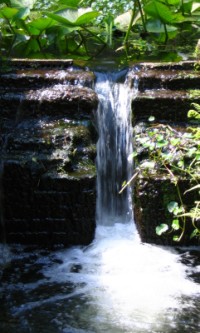Floridian Nature Spot of the Week: Ravine Gardens State Park
Now is the perfect time to visit Ravine Gardens State Park. The azalea's should be still blooming and our Florida weather could not be better. The 59 acre gardens were created in a natural steephead ravine by the
City of Palatka, local citizens, the Federal Emergency Relief
Administration (FERA), the Federal Works Project Administration (WPA and
the Civil Works Administration (CWA) in the 1930’S. Described in the
1934 Florida Municipal Record as the "Nations Outstanding Civil Works
Administration. project," the 59 acre ravines were planted with over
95,000 azaleas including 64 varieties, 11,000 palm trees and more than
250,000 ornamental plants. The gardens were maintained by the City of
Palatka until the park was deeded to the State of Florida in 1970. One
of nine Florida state parks with New Deal Era structures, Ravine Gardens
is the only park with a formal designed landscape. The extensive
fieldstone terraces, rock gardens and massive cypress building
construction is typical of the era. The Court of States and 64 foot
obelisk dedicated to Franklin D. Roosevelt is located near the park
entrance. A 1.8-mile paved road winds around the ravine, offering
motorists and bicyclists a view of the gardens.
And speaking of azaleas, did you know that Florida has wild azaleas growing in some areas? Native azaleas are deciduous shrubs
that are in the rhododendron family. It grows along streams and swamp
margins from North Carolina and Tennessee to central Florida, and west
to East Texas. Color variations and natural hybridization makes positive
identification difficult. Found in moist wooded hammocks, the wild
azalea can reach a height of six feet. The blooms of the wild azalea
come in a variety of colors, including pinks and whites. Wild azaleas
bloom in late march and April and attract a variety of butterflies,
along with attracting hummingbirds. Wild azalea needs an acidic soil.
Never add lime. If your soil is alkaline, forget about growing azaleas.
Azaleas do best with plenty of organic matter in the soil. Pile leaves
or pine needles over the root zone, and never cultivate there as they
have very shallow roots. Florida's native azaleas include, but are not
limited to, R. austrinum (flame azalea), an Endangered Species
which blooms bright orange and is very early flowering; and R.
viscosum, or swamp azalea, which is evergreen and blooms in the
summer with small white flowers.


Comments
Post a Comment